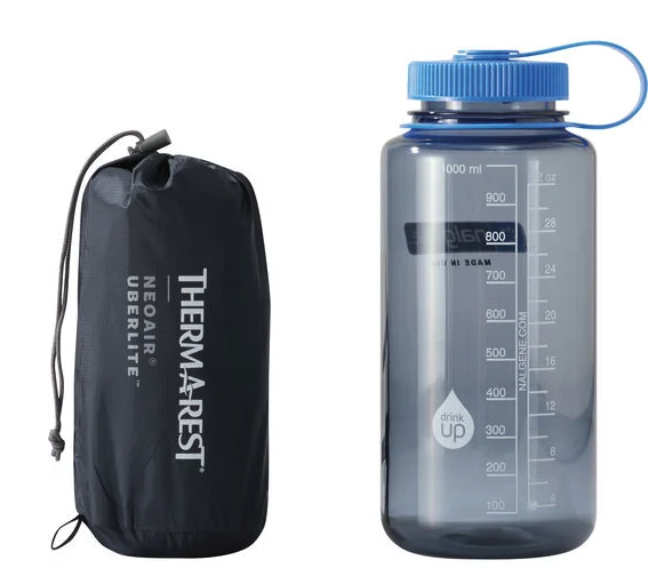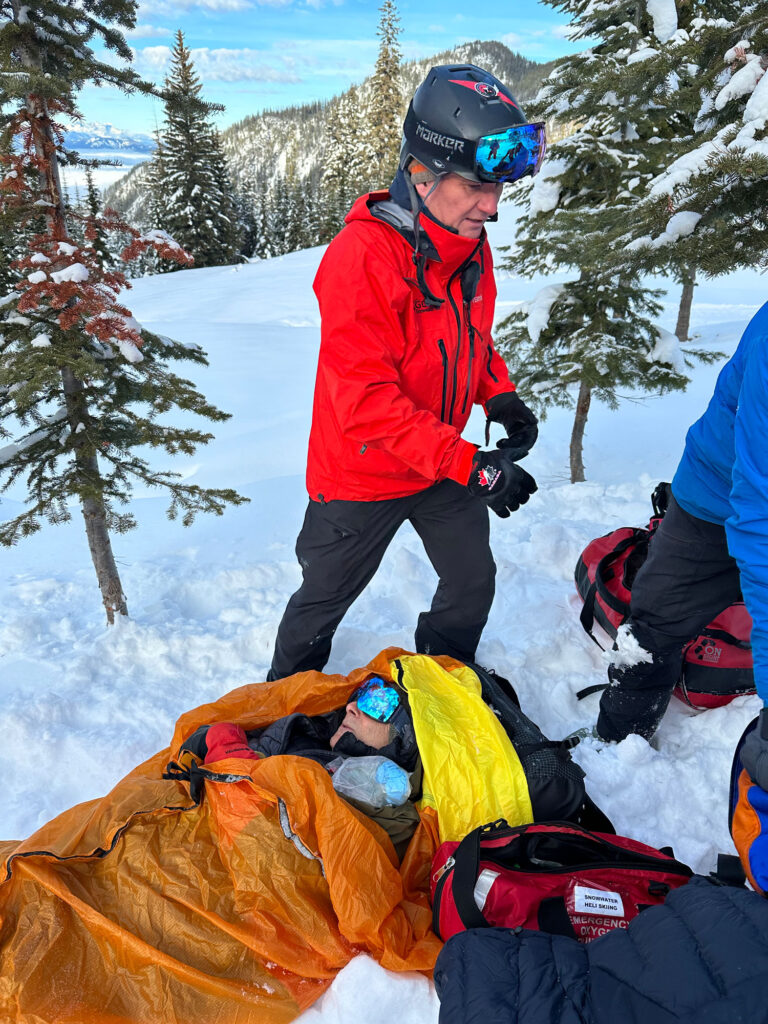Why a Sleeping Pad Should Always Be in Your Pack
We were dropping into our last line of the trip. I called it Bunny Love, because there were paw prints from two snowshoe rabbits leading up to the edge and then impressions from them sitting side by side. It was just before dusk, the setting sun turning our tracks through the light, fluffy powder into shadows.
My friend was skiing a film-worthy line, grinning from ear to ear as we hooted and hollered from the safe zone below. As he initiated a powerful slash turn at the bottom of the line, we heard him scream in pain and collapse into the snow.
He had broken his tibial plateau. While it’s an incredibly painful injury, a tibial plateau fracture isn’t usually fatal—but lying in the snow in minus-10 celcius with night falling certainly could be.
We were miles from the hut and a long way from help. One of us hit the SOS button on a satellite device to initiate a search and rescue (SAR) response. Then we had to figure out patient packaging and an evacuation plan. There was a toboggan at the hut, so two of the crew skied back to grab it and skin back up to us. They were fast, but it was going to take some time.
I knew we had to get him up off the snow quickly or hypothermia would rapidly make this a life-threatening situation. I’m a helicopter rescue paramedic, so I always ski with what I consider to be essential first-aid tools, one of which is a sleeping pad.
I used to always ski tour with a chunk of closed cell foam on the outside of my pack in case of emergency, and for something to sit on when taking a break for lunch or coffee. It was bulky but light and pretty much indestructible. But as technology brought weight and bulk down—the new pads pack down to the size of a coffee mug—I upgraded. I currently use the Thermarest Neoair Uberlite, which weighs a featherweight 8.8 ounces. I also add a micro pump that weighs 2.8 ounces, which might seem unnecessary, but I’ll come back to that in a minute.

We pulled out my Alpine Threadworks guide rescue tarp as our first layer, to both provide a sliding extrication tool and create a microclimate that would keep him warm and dry. Then we laid the sleeping pad on top. Here’s where the pump comes into play: Instead of having to inflate the pump myself, I can put it somewhere out of the wind and let it inflate itself while I’m providing patient care. It also helps me talk to a patient without being short of breath because of blowing up a pad.
At this point, you may be wondering why the sleeping pad is so key. A sleeping pad insulates the patient from the ground, which is the single biggest cause of heat loss. The trauma triad of death (also called the trauma diamond of death in higher end medicine) clearly shows a link between hypothermia and reduced clotting capability, reduced oxygen carrying capacity, impaired cardiac function, acidosis, reduced efficiency of medication, and a dramatic increase in mortality secondary to trauma. Hypothermia can also make the heart muscle, or myocardium, irritable. This means that a cold heart can easily be stimulated into a lethal dysrhythmia or cardiac arrest.

The second reason a sleeping pad is so important is to mitigate vibration, which is almost as important as preventing hypothermia. Vibration during extrication not only hurts, but it also interrupts the clotting cascade, essentially making bleeding worse. So having a pad beneath the patient can absorb some of this vibration and make a significant difference in the patient’s outcome, possibly saving his life.
Lastly, a sleeping pad can also act as a splint. Although not as firm as a commercial vacuum splint or hard splint, a pad can adequately splint part or all of the body. In this case, we taped his legs together after padding between them, essentially using his uninjured leg as a splint. And then we used the pad to act as a full-body splint for the extrication. Splinting does a whole lot for a patient, including pain relief and minimizing further injury during extrication. Splinting can also reduce bleeding.
Hours later, after we got him safely back to the hut in darkness, we used other sleeping pads to specifically splint his leg and body in a more comfortable position. We also used multiple pads to keep him warm on the floor beside the wood stove while we waited for SAR to arrive in the morning.
So in this one case, the pad was used for three purposes. Hypothermia management, vibration mitigation, and splinting.
The next morning, SAR landed in front of the hut and packaged him in their stretcher. Guess what they used between the patient and their stretcher? Yep, a Thermarest.
Miles Randell is a helicopter rescue paramedic with 34 years of experience in the backcountry. A board member of the Canadian Association for Wilderness Medicine, president of TEAAM Aeromedical with an 18-year background as a pro ski patroller at Whistler Blackcomb, 33 years of search and rescue, and instructional experience at the Canadian Forces School of Search and Rescue, the Paramedic Academy at the Justice Institute of BC, and at SARMed school, he also travels as a public speaker on wilderness medicine. In his free time, he’s a husband, a dad, ski mountaineer, mountain biker, surfer, and student pilot.


